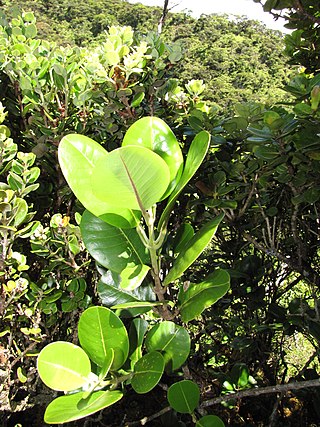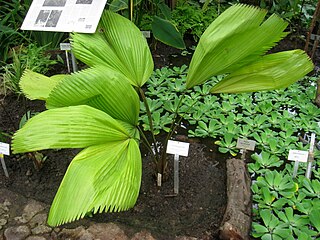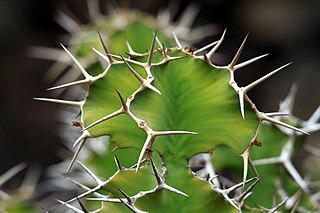
Tilia is a genus of about 30 species of trees or bushes, native throughout most of the temperate Northern Hemisphere. The tree is known as linden for the European species, and basswood for North American species. In Britain and Ireland they are commonly called lime trees, although they are not related to the citrus lime. The genus occurs in Europe and eastern North America, but the greatest species diversity is found in Asia. In Chinese, "椴/duàn" or "椴樹/duànshù" is a general term for Tilia species. Under the Cronquist classification system, this genus was placed in the family Tiliaceae, but genetic research summarised by the Angiosperm Phylogeny Group has resulted in the incorporation of this genus, and of most of the previous family, into the Malvaceae.

Tanjong Chek Jawa is a cape and the name of its 100-hectare wetlands located on the south-eastern tip of Pulau Ubin, an island off the north-eastern coast of the main island of Singapore. Chek Jawa is among the last few places left in Singapore with a natural rocky shore.

Pasir Ris Park is a beach park located in the eastern part of Singapore. It covers an area of 70 hectares, and was partially built on reclaimed land. Initially planned in the late 1970s to serve people living in the vicinity, the park was designed with the help of two Japanese landscape specialists. Construction began on the park in September 1984, and the park was opened in phases from August 1986 to 1991. The park was further expanded in 2007, with the addition of new areas such as a herb garden.

Ipomoea pes-caprae, also known as bayhops, bay-hops, beach morning glory or goat's foot, is a common pantropical creeping vine belonging to the family Convolvulaceae. It grows on the upper parts of beaches and endures salted air. It is one of the most common and most widely distributed salt tolerant plants and provides one of the best known examples of oceanic dispersal. Its seeds float and are unaffected by salt water.

The National Parks Board (NParks) is a statutory board under the Ministry of National Development of the Government of Singapore.
Licuala dasyantha is a species of palm tree in the family Arecaceae.

Anisoptera costata is an endangered species of plant in the family Dipterocarpaceae. The specific epithet costata means "ribbed", referring to the prominent venation of the leaf blade. A huge emergent tree up to 65 m high, it is found in evergreen and semi-evergreen lowland tropical seasonal forests of Indo-Burma and in mixed dipterocarp forests of Malesia.

Melicope orbicularis, also called Honokahua melicope or orbicular pelea, is a species of plant in the family Rutaceae. It is endemic to the Hawaiian Islands. It is threatened by habitat loss.

Medicago orbicularis is a plant species found throughout the Mediterranean basin and along the European Black Sea coast. It forms a symbiotic relationship with the bacterium Sinorhizobium medicae, which is capable of nitrogen fixation. Common names include blackdisk medick, button clover, button medick, and round-fruited medick.

Singapore has a wide variety of flora. Plants are mainly used to beautify the landscape of Singapore. The national flower is a hybrid orchid, Vanda Miss Joaquim.
Fan Palm Reserve is an 8.2 ha nature reserve in Far North Queensland, Australia. It is located in the Wet Tropics of Queensland World Heritage Site, 20 km north of Daintree and 40 km north of Mossman. It is owned and managed by Bush Heritage Australia (BHA), who purchased it in 1993.

The Southern Ridges comprise 10 kilometres (6.2 mi) of trails connecting three parks along the southern ridge of Singapore. Some of the attractions along these trails include its greenery and the connecting bridges. This project linked up the parks between the Kent Ridge Park and HarbourFront. The idea to link these parks was coined in 2002 by Urban Redevelopment Authority (URA) and it took 2 years to complete and cost S$25.5 million.

HortPark is a 9-hectare (22-acre) park and garden located in the southwestern part of Singapore. It opened in December 2007, but it was not until May 10, 2008, that Prime Minister Lee Hsien Loong, officially launched it.
West Coast Park is a park located at the south-westernmost corner of Queenstown in Singapore. It runs parallel to West Coast Highway. The park covers an area of roughly 50 hectares.

Licuala grandis, the ruffled fan palm, Vanuatu fan palm or Palas palm, is a species of palm tree in the family Arecaceae, native to Vanuatu, an island nation in the Pacific. It grows in the understory of primary and secondary tropical rain forests. It produces hermaphroditic inflorescences. It bears round green fruit that redden as they ripen, each containing a single seed.

Licuala ramsayi is a species of plant in the family Arecaceae; its common name is the Queensland or Australian fan palm. Two varieties are recognised: Licuala ramsayi var. ramsayi, and Licuala ramsayi var. tuckeri.

Licuala cattienensis, is a small fan palm, endemic to southern Vietnam. The type locality is in Cát Tiên National Park in Đồng Nai Province, growing in seasonal tropical forest in flat areas near rivers at low elevations. It is recognisable by being much smaller (<2m) and single-stemmed, in comparison the larger L. spinosa, which is common in the Park and grows in grows in clumps.

Euphorbia grandicornis, the cow's horn plant, is a succulent plant of the Euphorbiaceae or spurge family. It is native to the KwaZulu-Natal region of South Africa, to Mozambique, and to Eswatini.

Passiflora trifasciata is an endangered species of South American passionflower, native to the area spanning Ecuador to western Bolivia. Classified in subgenus Decaloba and supersection Decaloba, it is a liana with variegated leaves and small, fragrant white flowers.

Ficus grossularioides, the white-leaved fig, is a species of flowering plant that belongs to Moraceae, the fig or mulberry family, it is native to Southeast Asia.

















